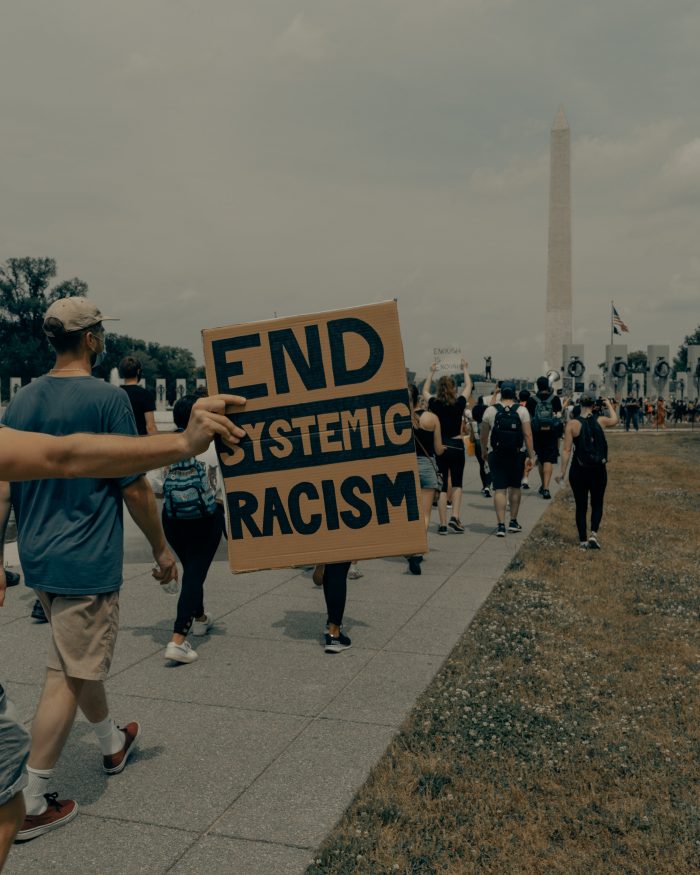A Message from ODP Fiscal Department
Watching for Signs of Child Abuse and Neglect but from a Distance
Philly Schools Form Virtual Gender and Sexuality Alliance

DHS Racial Equity Action Kick-Off – Day Two

Good morning,
I hope that you’re all feeling well today and that you found yesterday’s readings helpful and informative. Today, we are going to talk about types of racism and how it can exist and persist even in today’s society. For some, the topic of race was never discussed, and for others, race has been inextricably linked to all parts of their lives. Some of us grew up learning that if we see people as people and do not “see color”, we will overcome racism. Unfortunately, while well-intended, we know today that that approach has not served people of color well. It’s important to understand how this perspective can create more challenges; these challenges are outlined in “Being ‘Color Blind’ Doesn’t Make You Not Racist—In Fact, It Can Mean the Opposite”. This article and all other articles from today are available here.
As yesterday’s readings taught, racial identity can deeply affect how a person experiences the world and how they are treated by the world. People of color cannot separate their racial identity from their lives, and disregarding that fact disregards how they experience the world. As I said yesterday, my experience as a woman is different from how a man experiences the world. In the same vein, we cannot remove race as a factor in how a person experiences the world.
Many of us are now learning how our own education on race and racism in post-Civil-Rights-Era America has not done enough to help us understand the nuances of how racism still persists throughout our country, systems, and communities today. This can happen both passively and actively. Through these conversations, there are often different types of racism discussed. Understanding these types is important to understanding how they present themselves and affect people in different ways. For now, I invite you to explore more about these different types of racism and how they intersect. The Aspen Institute defines these well, and “What is Systemic Racism and Institutional Racism?” breaks down how they play out in society.
As we progress through our educational journey, we must remember that people of color are not a monolith. They can in fact experience racism in different ways. Teaching Tolerance’s “What’s ‘Colorism’?” explains this varying dynamic.
As you read these resources, I encourage you to think about the following questions:
- How has your race influenced your sense of self?
- How were you taught about racism? Do you feel it adequately prepared you to identify and respond to racism?
- Has racism affected how you perceive your own community?
- What were your reactions to the four levels of racism? Do they match your understanding of racism?
- How do you see structural and institutional racism in the world today?
- Were you familiar with colorism? Have you considered how it may affect a person’s experience?
I also encourage you to have these conversations with your coworkers if you are comfortable and able to do so. This is an opportunity for us to learn together, share our experiences, foster understanding and community, and build stronger bonds through these difficult but extremely necessary conversations.
Remember that these articles are meant to be a foundation and introduction that you can build from. They are not the only sources and perspectives on these issues.
Talk to you tomorrow,
Teresa Miller, Secretary of the Department of Human Services
Employment First Community of Practice Webinars and Employment Updates
The Employment First Community of Practice will host a webinar on “Competitive Integrated Employment in 2020 – Consumer and Provider Perspectives” on December 9, 2020 from 3:00 pm – 4:00 pm Eastern Time (ET). This webinar will share stories about how people with intellectual and developmental disabilities have adapted to employment changes during the COVID-19 pandemic so that they can continue to work. It will also outline ways that employment services providers have changed their job development and job coaching strategies.
- Register for “Competitive Integrated Employment in 2020 – Consumer and Provider Perspectives”
Pre-Employment Transition Services Funding
The Employment First Community of Practice webinar on “Pre-Employment Transition Services Flexibility Regarding the Use of Federal Vocational Rehabilitation Funds” is available for viewing. The webinar provides an overview and background of the Notice of Interpretation (NOI) published in the Federal Register on February 28, 2020 by the US Department of Education’s Office of Special Education and Rehabilitative Services about the State Vocational Rehabilitation (VR) program. The NOI addresses questions and comments about reserve funds’ allowable use for auxiliary aids and services; it also addresses questions concerning other VR services listed in the Rehabilitation Act.
- View “Pre-Employment Transition Services Flexibility Regarding the Use of Federal Vocational Rehabilitation Funds”
Disability Employment Etiquette
The Council of State Governments (CSG) and the State Exchange on Employment and Disability will present a webinar on “Disability Employment Etiquette” on December 11, 2020 from 2:00 pm – 4:00 pm ET as part of CSG’s 2020 National Conference. The webinar will focus on interacting with people with disabilities and creating inclusive workplaces.
- Register for “Disability Employment Etiquette”
Ensuring a Disability Perspective in State Policy
The webinar on “Ensuring a Disability Perspective in State Policy”, hosted by the Council of State Governments (CSG) and the State Exchange on Employment and Disability, is available for viewing. The webinar, which was held as part of the CSG 2020 National Conference, features discussions on how states can include individuals with disabilities in broader policymaking, including a disability perspective on commissions on transportation, the future of work, and other state initiatives. It was the final episode in an ADA30 series produced by CSG that explored the origin and legacy of the Americans with Disabilities Act (ADA).
- Register to watch “Ensuring a Disability Perspective in State Policy”
- Visit the ADA30 Series Archive
Making Documents Accessible
The Partnership on Employment and Accessible Technology released “Making Documents Accessible.” This resource provides steps to follow to ensure that documents are designed so that people with and without disabilities can easily access and edit them.
- Read “Making Documents Accessible”
COVID-19 Accessible Materials for People with Disabilities Webinar Series
The Georgia Tech Center for Inclusive Design and Innovation is presenting the COVID-19 Accessible Materials for People with Disabilities webinar series. Included is “A Closer Look: Mental Health and Resilience within the Disability Community During COVID-19”, which will be held on December 16, 2020 from 2:00 pm – 3:00 pm ET. This webinar will explore the mental health and resilience of people with disabilities during the COVID-19 pandemic and ways service providers can access relevant resources. Additional webinars include “Making Social Media Accessible for People with Disabilities”, which will be held on January 20, 2021 from 2:00 pm – 3:00 pm ET, and “A Closer Look: Guidance for Businesses and Employers Considering the Needs of People with Disabilities During COVID-19”, which will be held on February 10, 2021 from 2:00 pm – 3:00 pm ET.
- Register for “A Closer Look: Mental Health and Resilience within the Disability Community During COVID-19”
- Register for “Making Social Media Accessible for People with Disabilities”
- Register for “A Closer Look: Guidance for Businesses and Employers Considering the Needs of People with Disabilities During COVID-19”
DHS Racial Equity Action Kick-Off – Day One
Good morning,
I hope you all had a good weekend! Today is the first day of the Department of Human Services’s (DHS’s) Racial Equity Action Kick-Off, and we’re going to start the week with a foundational overview on racial identity – how it is established and how it influences our lives. When you have time, please read the Summary of Stages of Racial Identity Development from the Racial Equity Tools website. That website is a wealth of information, and I highly encourage you to peruse their resources, particularly the Core Concepts as they give a strong overview that can help guide these conversations as we move forward. Another great source is The New York Times’s Conversations on Race Series. Through this series, you can learn about how race affects a person’s daily life directly from people of different races, ages, genders, and other varying perspectives that influence their experiences and world views.
Our social identities can shape our world view. How I experience the world as a woman is different from how a man experiences life and society. At the same time, how I experience the world as a white woman is different from how a woman of color experiences life and society. Recognizing that the experience of life is not “one size fits all” and that our identities shape our realities is critical in building empathy and understanding. Without empathy and understanding, we cannot progress. In addition to social identities, other factors can also influence our perspectives and experiences. Variables such as income and education level can, in some cases, serve as barriers for people and add to their personal challenges in life. You may be familiar with the term intersectionality – this term speaks to the interplay between social identities and barriers. Kimberlé Crenshaw, a scholar and professor at both the University of California at Los Angeles (UCLA) School of Law and Columbia Law School, gives an overview of intersectionality in an article included in 12.7 articles. There are also numerous other speeches and articles from her if you are interested in learning more.
I’m sure most of you have heard the term “white privilege” in the last couple of years. This term is one that people often misunderstand. White privilege does not assume that white people are exempt from struggles or challenges in life. Rather, the term works to point out the inequitable access to power, resources, and social currency that white people have in comparison to their black and brown equivalents. “What is White Privilege, Really?” from Teaching Tolerance (available in the 12.7 Articles PDF) details what privilege can mean, including how it affects people even if they do not feel that they experience privileges in their lives. If this term has been confusing or alienating, I encourage you to delve a little deeper because, in that discomfort, you may find an opportunity for learning, reflection, and empathy for others who do not have this privilege.
As you read and watch these resources, I encourage you to think about the following questions:
- What is a racial identity? How has my race impacted my life?
- How were my ideas and beliefs about race formed?
- Have you previously considered your own racial identity? If so, how? Do you feel your race influences your life? If no, what do you think your life would be like if that answer were yes?
- What is intersectionality? Am I impacted by intersectionality? If you are not, can you think of someone in your life who is impacted by intersectionality?
- Do you believe you have experienced privilege? Do you believe you have experienced marginalization? Has this ever affected your day-to-day life? Interactions?
I also encourage you to have these conversations with your coworkers as you are comfortable and able. This is an opportunity for us to learn together, share our experiences, foster understanding and community, and build stronger bonds through these difficult but extremely necessary conversations. Remember, these articles are meant to be a foundation and introduction that you can build from. They are not the only sources and perspectives on these issues.
Talk to you tomorrow,
Teresa Miller, Secretary of the Department of Human Services
PA Senate Democrats Call for $4 Billion COVID Relief Package Using Emergency Debt
On Friday, December 4, the Pennsylvania Senate Democrats introduced a state-level $4 billion COVID-19 pandemic relief proposal.
The Democrats’ proposal — titled the “Pennsylvania Coronavirus Aid, Relief, and Economic Security Act of 2021,” or “PA CARES 21” for short — aims to fund existing pandemic relief programs and establish new ones by taking out emergency debt and tapping into the state’s Rainy Day Fund. The proposal targets areas such as unemployment compensation, small business relief, education, and housing assistance.
If adopted, the Senate Democrats’ PA CARES 21 plan would fund the following by both allocating money toward existing programs and establishing new relief programs in previously unaddressed areas:
- $1 billion in unemployment benefits;
- $800 million in business assistance;
- $594 million in local government assistance;
- $411 million toward education (including higher education, Pre-K, and basic education);
- $318 million toward Department of Human Services programs;
- $180 million in transportation funding;
- $135 million toward hazard pay;
- $100 million in housing assistance;
- $100 million toward hospitals;
- $100 million in utility assistance;
- $75 million toward child care;
- $50 million toward food security efforts;
- $25 million for personal protective equipment and vaccines; and
- $15 million in mental health funding.
Senate Democrats hope to begin negotiating the details of the package as soon as possible, but it may experience heavy resistance from Senate Republicans, who have the majority in the Senate.
Family First Delay















